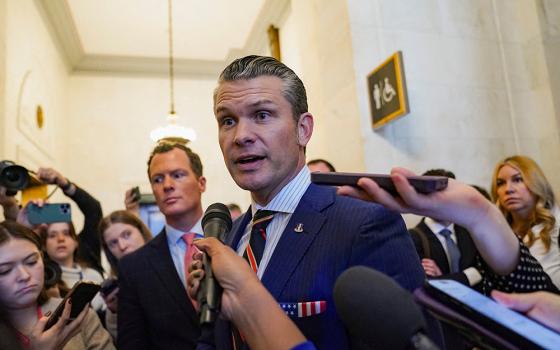Heading into the home stretch of the visit to Guatemala. Earlier this week I spent a day with Bishop Alvaro Ramazzini of Huehuetenango, a diocese in the country's western highlands. Friend and interpreter Dennis Smith and I accompanied Ramazzini to a meeting of mostly indigenous members of some 53 communities that make up the city of Totonicapan, the capital of a department of the same name.
The meeting was held in St. Ann parish hall and about 120 people showed up to discuss next steps in bringing suit against the army and police in the shooting deaths of six and wounding of 40 during a demonstration in October, 2012. The protesters were seeking lower utility rates among other demands.
According to the group's chairman and lawyer, the government's attorney general supports the case for which considerable documentary and witness evidence exists. The obstacles to going to trial, according to those attending and running the meeting, are corrupt politicians and judges who keep delaying the issue. Ramazzini, widely known for his advocacy of indigenous rights and for fighting unrestricted and unregulated mining by foreign interests, is a key leader in the effort to hold the police accountable.
A side note: According to the pastor of the parish where the event was held, three priests serve a parish of 100,000 (yes, that many zeroes). They are assisted by 3,000 lay ministers -- everything from lectors to catechists -- who meet regularly for training and then serve in the communities making up the parish. Last year, the parish confirmed 1,300. From this kind of data it is easy to keep making the case that the emerging Catholic church is often being formed on the margins and largely out of sight of the developed world.
Earlier in the week we met with Jesuit Fr. Dennis Leder, a painter and sculptor who now runs a spirituality and retreat center outside of Guatemala City. He's originally from the New York province and has some interesting insights into art, spirituality, Catholicism and Guatemala.
Met Thursday with Maryknoll Sr. Dee Smith, director of Proyecto Vida, an AIDS prevention and education program that includes a hospice for AIDS patients.
On our way up to the highlands from Guatemala City, one crosses the highest point on the Pan American Highway (a bit more than 10,000 feet I was told) before settling in at about 4,500 feet in Huehuetenango. (The hour drive from Huehuetenango to Totonicapan steadily climbs along winding mountain roads to about 8,500 feet) Along the way from Guatemala City we met up with Antonio Otzoy, a Presbyterian minister and Mayan spiritual guide, and toured an ancient Mayan site where there are some remains left of a large complex that he said was used as a kind of cultural learning center -- a sort of Mayan vocational school -- from about 300 to 800 AD.
Enough for now. That's but a sampling of the interviews and conversations I've had in this bitterly sweet country that is currently about the complex business of emerging from a period of unspeakable atrocities and social upheaval. While the situation can seem impossible from the outside, the trip has provided some valuable and interesting insights into the other side of conflic:t:
-- realizations that surface for any people that has engaged in or suffered from mass violence;
-- development of complex ecumenical relationships;
-- exploration of indigenous identity and spiritualities that by necessity not only overlap but complement each other;
-- and dealing with the deep questions that remain about confronting one's history, dealing with questions of guilt and accountability, and finding ways to move on.
Much more later.




